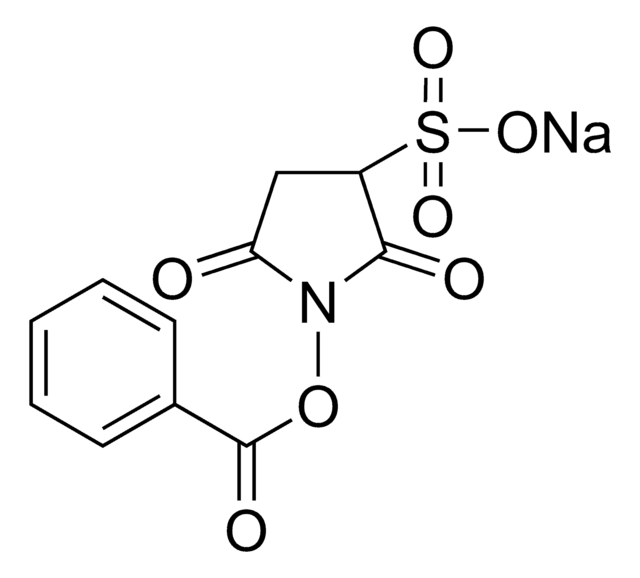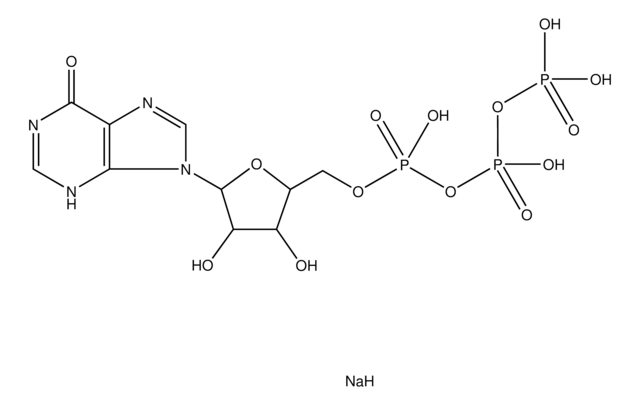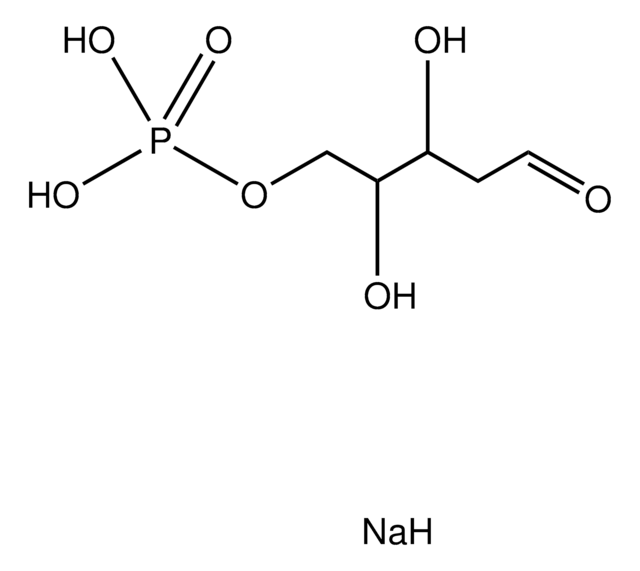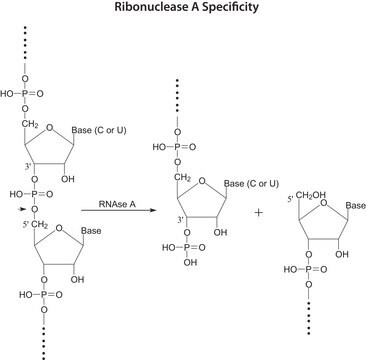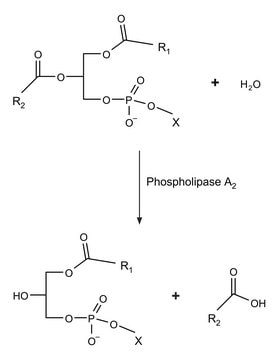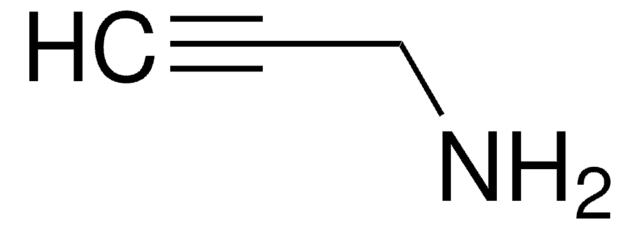Wichtige Dokumente
808490
N6-Propargyl-ATP sodium salt
Synonym(e):
(N6pATP) sodium salt, N6-Propargyl-adenosine-5’-triphosphate sodium salt
About This Item
Empfohlene Produkte
Assay
≥95% (HPLC)
Qualitätsniveau
Form
solid
Eignung der Reaktion
reaction type: click chemistry
Löslichkeit
10 mM Tris-HCl, pH 7.5: soluble
Versandbedingung
wet ice
Lagertemp.
−20°C
SMILES String
O[C@@H]([C@H]1O)[C@@H](COP(O)(OP(O)(OP(O)(O)=O)=O)=O)O[C@@H]1N2C=NC3=C2N=CN=C3NCC#C
InChI
1S/C13H18N5O13P3/c1-2-3-14-11-8-12(16-5-15-11)18(6-17-8)13-10(20)9(19)7(29-13)4-28-33(24,25)31-34(26,27)30-32(21,22)23/h1,5-7,9-10,13,19-20H,3-4H2,(H,24,25)(H,26,27)(H,14,15,16)(H2,21,22,23)/t7-,9-,10-,13?/m1/s1
InChIKey
MUOIWXPACQCYQC-RJNFYWFKSA-N
Anwendung
Lagerklassenschlüssel
11 - Combustible Solids
WGK
WGK 3
Flammpunkt (°F)
Not applicable
Flammpunkt (°C)
Not applicable
Hier finden Sie alle aktuellen Versionen:
Besitzen Sie dieses Produkt bereits?
In der Dokumentenbibliothek finden Sie die Dokumentation zu den Produkten, die Sie kürzlich erworben haben.
Kunden haben sich ebenfalls angesehen
Unser Team von Wissenschaftlern verfügt über Erfahrung in allen Forschungsbereichen einschließlich Life Science, Materialwissenschaften, chemischer Synthese, Chromatographie, Analytik und vielen mehr..
Setzen Sie sich mit dem technischen Dienst in Verbindung.
![γ-[(Propargyl)-imido]-ATP sodium salt](/deepweb/assets/sigmaaldrich/product/structures/394/730/00e7a2cd-6683-4939-9d87-4c35480b1186/640/00e7a2cd-6683-4939-9d87-4c35480b1186.png)

